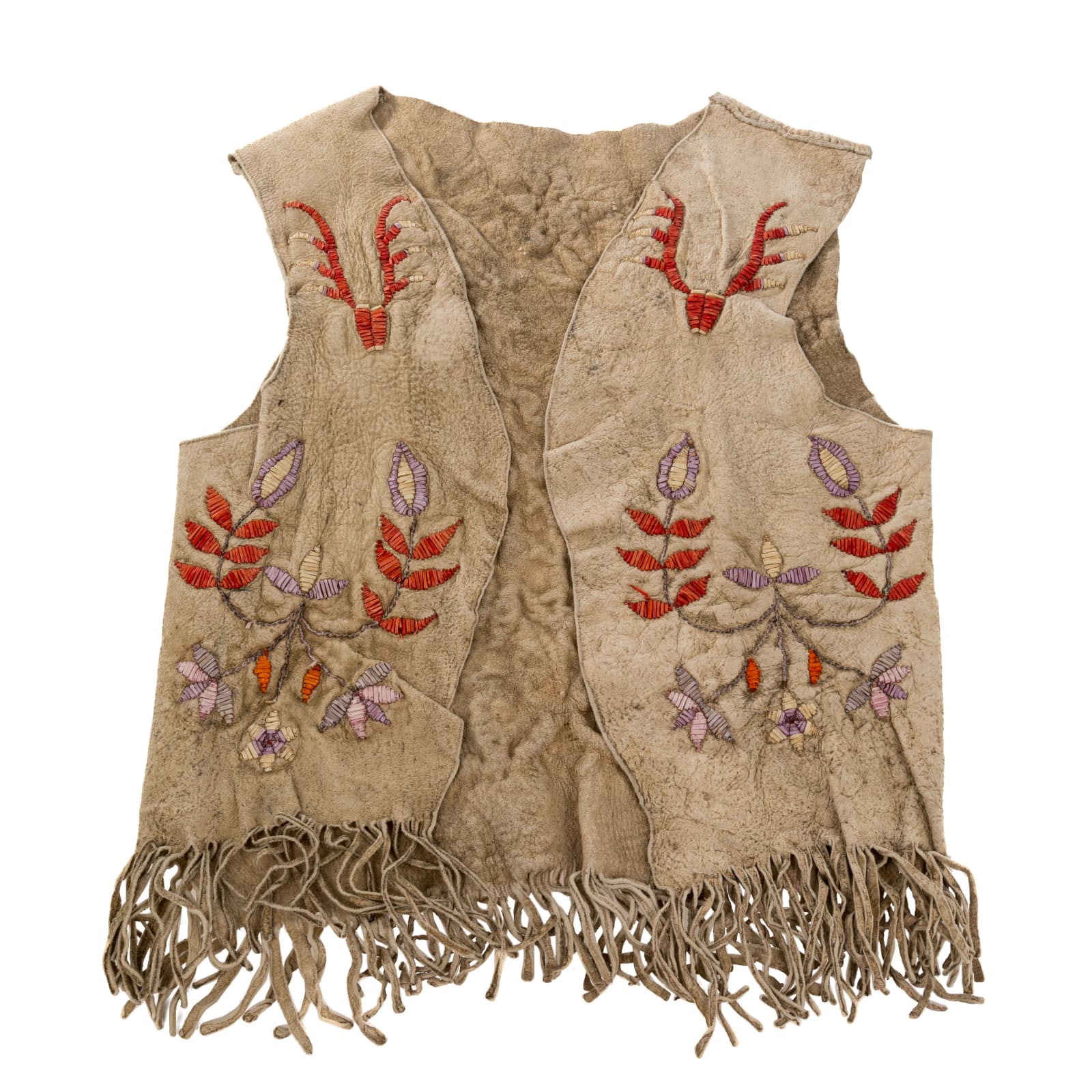-
Artworks
UNIDENTIFIED EASTERN SIOUX (PROBABLY SANTEE) ARTIST
Quilled Child's Vest, late 19th centuryhide, quills, and dyes, 15 x 12 x 0.25 in (38.1 x 30.5 x 0.6 cm), measurements reflect dimensions with fringeLOT 26
ESTIMATE: $400 — $600
PRICE REALIZED: $840.00Further images
This late 19th-century child's vest, intricately decorated with quillwork, is believed to be the work of an unidentified Eastern Sioux (likely Santee) artist. The vest is expertly crafted from hide...This late 19th-century child's vest, intricately decorated with quillwork, is believed to be the work of an unidentified Eastern Sioux (likely Santee) artist.
The vest is expertly crafted from hide and adorned with dyed quills — a testament to the enduring Sioux tradition of quillwork even after European contact. Quillwork is an art form mastered by many Indigenous peoples, including the Sioux, where the quills of porcupines are dyed with natural dyes and woven into the hide in elaborate patterns. The dyes used, despite the availability of synthetic options post-contact, hint at a preference for traditional methods, possibly utilizing indigenous plant life and minerals.
Expressed through this quillwork is brilliant imagery. On the front and back, floral and folate designs likely reflect the local flora, which plays a central role in Santee traditions, both as a food source and in medicinal practices. The colours chosen for the quillwork are vibrant and may hold specific meanings within Santee culture. For example, red is often associated with life and energy, possibly evoking the strength and vitality hoped for in a child's life. Meanwhile, the purples and whites might represent purity and spirituality, elements essential to the moral and physical growth of a young member of the community.
The pair of deer or elk on the breast of the vest may reflect grace and vitality. The placement of the animals on the vest, high and close to the shoulders may imply a hope that the child will embody the admirable qualities of these animals.
The birds on the reverse may also carry significant cultural symbolism. In many Indigenous cultures, birds are revered as messengers between the earthly world and the spiritual realm. For the Santee, the specific species represented could have particular associations—eagles, for instance, are often esteemed for their strength and freedom. The direction the birds are facing, along with their placement on the garment, might be telling of their intended meaning. Birds flying upwards can be interpreted as carriers of prayers to the heavens.
Provenance
Important Private Collection, Pittsburgh, PA.
Join our mailing list
* denotes required fields
We will process the personal data you have supplied in accordance with our privacy policy (available on request). You can unsubscribe or change your preferences at any time by clicking the link in our emails.








